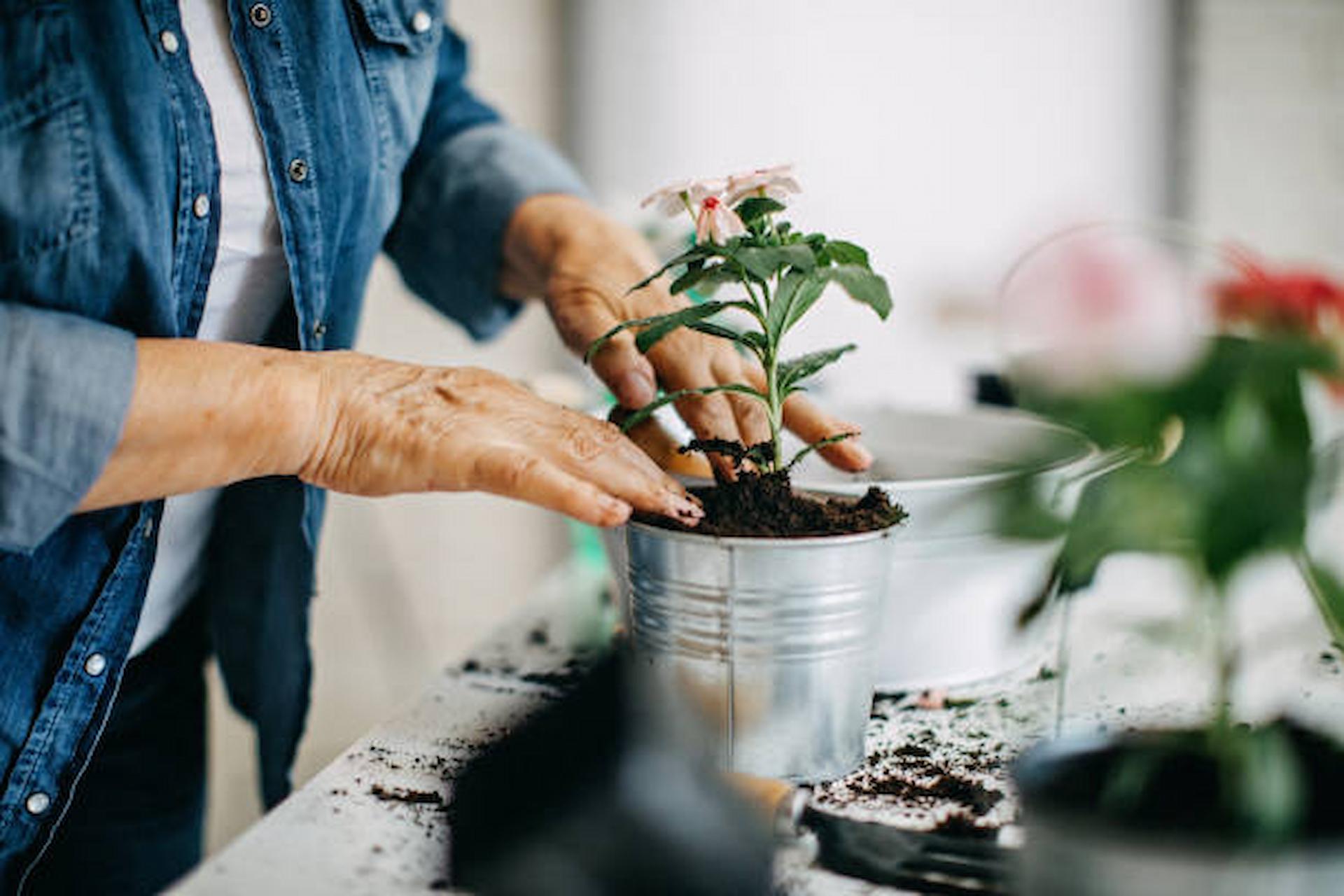Microgreens on the windowsill, vertical gardening of the balcony and flowers in hanging pots are a source of pride and a fashionable hobby. We have prepared tips for those who want to try their hand at home gardening: where to start gardening at home, how to choose plants for the interior and what trends to pay attention to.
Spicy Greens On The Windowsill
A herb garden can be grown on a kitchen window. Everyone can do it – herbs require minimal conditions: a light window sill and timely watering. Basil, parsley, dill, cilantro, onion, rosemary, thyme and microgreens can be grown throughout the spring and summer in the window if the sun looks in there for at least 3-4 hours a day.
There are several general principles for growing greenery at home. For planting, you need to prepare a suitable container with a hole to drain the water. This can be a mini greenhouse with peat pots, clay or plastic pots, containers, wooden boxes. Pour drainage at the bottom – small expanded clay. You can prepare the soil yourself, but it is better to buy ready-made in the store – it already contains the necessary substances. Most often, the seeds require preliminary soaking for a day, for example, on a cotton pad moistened with water. And after planting, it is recommended to cover the container with a film to create a greenhouse effect – this way the seeds will germinate faster.
How To Choose Plants For Your Home
Many people would like to grow indoor plants, but are not sure how they will succeed. Succulents are ideal flowers for budding gardeners and those who constantly forget to water them. They grow slowly, take up little space, survive in the shade, and can survive for weeks without watering. And over the past few years, succulents have become a real trend and are used to decorate spaces.
Beginners will also cope with zamiokulkas, sansevieria, philodendron for them, rare watering once every 1-2 weeks and diffused sunlight will be enough for them. A slightly more responsible, but not at all complicated approach requires home ficuses. Choose from a variety of varieties to your liking: the classic Benjamin ficus, the elastica ficus with dense glossy leaves, or the popular lyrata ficus. And if you feel strong enough, try growing a real banana tree or strelitzia with dense large leaves.
When choosing a plant variety, think about how it will look in the interior. In open spaces with high ceilings, large plants with large leaves are appropriate: pakhira, hovea, banana. For a modern minimalist interior, it is better to choose plants of simple shapes with a clearly defined leaf shape: spathiphyllum, elastica ficus, monstera, zamiokulkas. And to emphasise the relaxed and relaxed atmosphere, pay attention to calathea, echeveria, crassula, and alocasia.
In rooms on the sunny side, ficus, aloe, Kalanchoe, pelargonium, lily, palm and other tropical plants feel good. If the windows of the room face north and the sun rarely looks into the house, take a closer look at aspidistra, dracaena, spathiphyllum, maidenhair, nephrolepis, philodendron, monster.
If you want bright colors on your windowsill – sow undersized marigolds in pots. They sprout quickly, bloom profusely and for a long time and smell very tasty. Marigolds love bright sun, but they can also tolerate light partial shade.
Home Gardening Trends
Houseplants are a trend in and of themselves and are important participants in a modern interior in any style. Phyto Design also has its own trends:
Green wall. Growing a vertical carpet of plants on a balcony is a laborious process, but the result is worth it.
Florariums in glass. Plants are planted in transparent vases, aquariums and jars so that the soil, pebbles and roots are visible.
An assortment of succulents in a long wooden box looks very impressive on a windowsill or on a balcony.
Hanging structures for pots in macrame style. Plants soar from the ceiling and also decorate the room from above.
Dried flowers in vases: dried sprigs of lavender, eucalyptus, cotton, lotus look beautiful in transparent bottles.
Mini greenhouses with a variety of miniature flowers planted in close proximity to each other.
Bonsai is a tree with a height of 15 to 30 cm, completely recreating the appearance of a large tree. It has a pronounced trunk and spreading branches covered with foliage. They are popular both as a stand-alone plant and in compositions.

